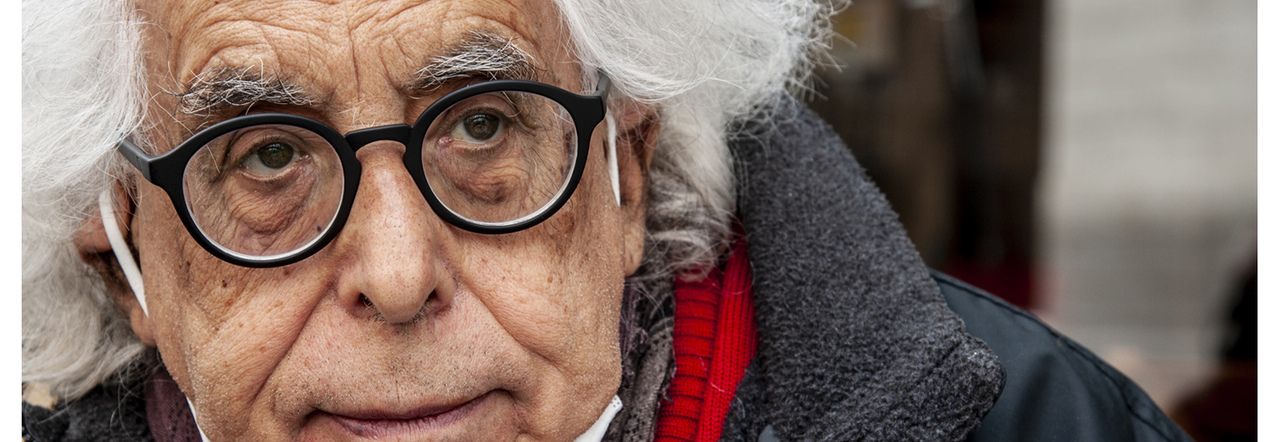Last appointment of the section A Step Back, scheduled within the VIII edition of The Saturday of Photography, a format of meetings, exhibitions, and workshops curated by Pino Miraglia in Sala Assoli.
After Dino Fracchia, Paola Agosti, and Fabio Donato, on Saturday, April 6th (at 11:00 and 18:30), the theatrical space of the Spanish Quarters will host another great name of Italian photography, Tano D'Amico, with the exhibition The Rebel Memory of Tano, open during the theater's opening hours until May 19th.
On Saturday, April 6th, the public will have the opportunity to meet the artist at 11:30, together with Igina Di Napoli (Artistic Director of Casa del Contemporaneo) and Sergio Brancato (professor of Sociology of cultural communication processes at the University of Naples Federico II), participating in the debate Dissent, Politics, and Society: From the Seventies to Today. At the end of the meeting, the film The Great Blek (1987), the debut work of Giuseppe Piccioni, will be screened.
The photos, unequivocally iconic of Tano D'Amico, as well as his spirit, have always been a fundamental testimony of the last fifty years of life and history in Italy; affirming and restoring the immense value of reportage photography as a heritage of our country. The photographer's choice has always been a political and social stance: close, with his special gaze, to the excluded, the dispossessed, the last.
In his images you can breathe our memory, the history of social classes that have determined civil achievements and rights for future generations. It is impossible not to find oneself in the faces of women and young people who have fought for their freedom of thought, expression, and the free and responsible use of their body and sexuality. D'Amico returns stories that are still alive and tangible, particularly relevant, at a historical moment that seems to question established social and civil achievements.
In this regard, Tano D'Amico states: "The movements of my years have brought into history those who had never entered it. A consciousness, a new awareness was formed. We all presented ourselves together in the streets holding hands." And again: "A good photograph, a photograph that initiates a thought, that becomes part of us, that we cannot forget, is always the result of knowledge, study, interest, participation, love. These are the photographs that do not get consumed. They consume. They work inside us. They are photographs that have a personality, a life of their own."
Tano D'Amico approached photography almost by chance, in the climate of the student protest of '68. Initially close to the groups of Catholic dissent, in 1969 he began a long collaboration with Lotta continua and with Potere operaio. His first reportages are dedicated to the South, in Sicily and Sardinia. But he also travels abroad: for "Il Mondo" he goes to Ireland during the civil war (1972) and to Greece under the colonels (1973). Then he is in Francoist Spain; in Portugal during the Carnation Revolution; several times in Palestine, since 1975. In the Eighties and Nineties, he will go to Somalia, Bosnia, Chiapas, United States. His gaze immediately distinguishes itself from that of other photographers. He is not interested in news events as much as the reasons that produce them. He closely follows the student and worker movement throughout its course, covering the entire Seventies, with images that go, as he will say, "beyond the cliché of violence". He is close to workers, miners, feminists. He photographs prisons, barracks, asylums, factories, mines. He follows housing struggles and the world of the unemployed. He also works with gypsies, whom he tries to portray more with images of joy than with those of poverty and pain.
D'Amico is the photographer of the powerless, of the defeated, whose human beauty in social discomfort he manages to capture. His images seek to restore dignity to those from whom dignity has been taken. He represents them with complicity, sympathy, participation, making black and white and the 35mm lens a precise stylistic choice.

